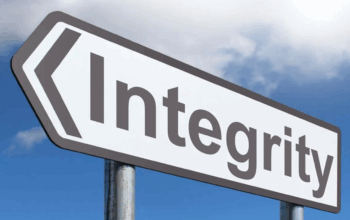In the often-complex world of personal and asset protection, the term “comprehensive coverage” frequently surfaces, promising a broad shield against unforeseen risks. Yet, what exactly does this crucial phrase encompass, and why is it so vital in today’s unpredictable landscape? Far more than a mere buzzword, comprehensive coverage represents a robust and multifaceted approach to safeguarding what matters most—whether it’s your vehicle, your home, your health, or your financial future. This article delves deep into the intricacies of comprehensive coverage, explaining its core principles, exploring its diverse applications across various insurance domains, highlighting its immense benefits, and discussing the essential factors to consider when choosing the right level of protection for your specific needs. Understanding this concept is not just about buying a policy; it’s about building a resilient safety net that offers genuine peace of mind.
Defining the Scope: What is “Comprehensive”?
At its heart, comprehensive coverage refers to an insurance policy component that protects against a wide range of damages or losses not caused by a collision or a standard, defined event. Instead, it typically covers incidents beyond your control or standard liability. It’s often contrasted with “collision coverage,” which specifically handles damages resulting from an accident with another vehicle or object.
While the specifics vary by type of insurance, the general principle of “comprehensive” includes protection against:
A. Acts of Nature: Such as hail, windstorms, floods, earthquakes, fires, and falling objects (trees, debris). B. Theft and Vandalism: Protection if your insured asset is stolen or intentionally damaged. C. Animal-Related Incidents: Damage caused by hitting an animal (e.g., deer, livestock). D. Other Non-Collision Events: This can include civil disturbances, riots, or damage from explosions. E. Unforeseen Circumstances: Often acting as a catch-all for perils not explicitly excluded or covered by other specific policy sections.
The inclusion of comprehensive coverage is a significant upgrade from basic, liability-only policies, which primarily protect you against financial responsibility for damage or injury you cause to others. Comprehensive coverage, conversely, focuses on protecting your own insured property or well-being from a broad spectrum of external threats.
Comprehensive Coverage in Diverse Insurance Realms
The concept of comprehensive coverage isn’t confined to a single type of insurance; rather, its principles extend across various sectors, each tailored to specific assets or risks.
A. Auto Insurance: Protecting Your Vehicle
In the automotive world, comprehensive auto insurance is one of the most common applications of this term. It covers damage to your vehicle from events other than a collision.
- Typical Covered Perils:
- Theft: If your car is stolen.
- Vandalism: Intentional damage to your vehicle.
- Fire: Damage from a vehicle fire.
- Falling Objects: A tree branch falling on your car, hail damage, or rocks kicked up by other vehicles.
- Natural Disasters: Floods, earthquakes, windstorms, lightning.
- Animal Collisions: Hitting a deer or other animal.
- Civil Disturbances: Damage from riots or protests.
- What it Doesn’t Cover:
- Collision Damage: This requires collision coverage.
- Liability: Damage or injury you cause to others; this is covered by liability insurance.
- Wear and Tear: Routine maintenance or damage from normal use.
- Mechanical Breakdown: Usually requires a separate extended warranty.
- Deductibles: Like many insurance types, comprehensive auto coverage typically has a deductible. This is the amount you pay out-of-pocket before your insurance kicks in. Choosing a higher deductible often lowers your premium, but means more out-of-pocket expense if you file a claim.
- Why It’s Crucial for Vehicles: For newer cars, leased vehicles, or those with outstanding loans, comprehensive coverage is often mandatory. Even for older, fully owned vehicles, it offers vital protection against common, non-collision events that can lead to significant repair costs or total loss.
B. Homeowners Insurance: Safeguarding Your Residence
Within homeowners insurance, the concept of comprehensive is represented by “all-perils” or “open perils” policies (often HO-3 or HO-5 forms), as opposed to “named perils” policies.
- Named Perils vs. Open Perils:
- Named Perils: This policy only covers losses specifically listed in the policy (e.g., fire, lightning, windstorm, theft). If it’s not listed, it’s not covered.
- Open Perils (Comprehensive): This policy covers all types of losses except those specifically excluded. This provides a much broader scope of protection. Common exclusions typically include floods, earthquakes (often require separate policies), war, and nuclear hazards.
- Covered Components:
- Dwelling: The physical structure of your home.
- Other Structures: Detached garages, sheds, fences.
- Personal Property: Your belongings inside the home (furniture, electronics, clothing).
- Loss of Use: Additional living expenses if your home becomes uninhabitable due to a covered loss.
- Liability: Protection if someone is injured on your property.
- Benefits of Open Perils: Provides far greater peace of mind as it assumes coverage unless an exclusion is explicitly stated. This is especially important for unusual or unforeseen events that aren’t common enough to be “named.”
C. Health Insurance: Broad Medical Protection
While not always explicitly called “comprehensive,” a health insurance plan offering broad coverage embodies this principle by covering a wide array of medical services and conditions.
- Key Comprehensive Features:
- Preventive Care: Screenings, vaccinations, annual check-ups.
- Doctor Visits: For illnesses, injuries, and specialist referrals.
- Hospital Stays: Inpatient and outpatient services.
- Prescription Drugs: Coverage for a wide range of medications.
- Emergency Services: ER visits and ambulance services.
- Mental Health Services: Therapy, counseling, psychiatric care.
- Maternity and Newborn Care: Services related to pregnancy, childbirth, and infant care.
- Rehabilitative Services: Physical therapy, occupational therapy.
- Exclusions and Limitations: Even comprehensive health plans have exclusions (e.g., cosmetic surgery, experimental treatments) and limitations (e.g., annual maximums, network restrictions).
- Importance: A comprehensive health plan is critical to avoid financially devastating medical bills from unexpected illnesses, accidents, or chronic conditions. It facilitates access to necessary care, promoting overall well-being.
D. Travel Insurance: Protection for Journeys
For travelers, comprehensive travel insurance offers a wide safety net against the numerous risks associated with journeys, both domestic and international.
- Typical Covered Events:
- Trip Cancellation/Interruption: Reimburses non-refundable expenses if your trip is canceled or cut short due to covered reasons (illness, death, natural disaster).
- Medical Emergencies: Covers medical treatment, hospitalization, and emergency evacuation while traveling.
- Baggage Loss/Delay: Compensation for lost, stolen, or delayed luggage.
- Travel Delays: Coverage for additional expenses (accommodation, meals) due to prolonged delays.
- Personal Liability: If you accidentally cause injury or damage to others while abroad.
- Variations: Policies can range from basic medical-only plans to highly comprehensive plans covering almost every conceivable travel mishap. The “comprehensive” versions offer the broadest peace of mind.
E. Business Insurance: Protecting Enterprises
For businesses, comprehensive coverage often means a combination of policies designed to protect against a wide array of operational risks.
- Business Owners Policy (BOP): Often considered “comprehensive” for small to medium-sized businesses, a BOP combines:
- Property Insurance: For buildings and business personal property.
- General Liability Insurance: For bodily injury or property damage to third parties.
- Business Interruption Insurance: Replaces lost income and covers extra expenses if your business is forced to close temporarily due to a covered peril.
- Other Comprehensive Elements: Depending on the business, “comprehensive” might also involve:
- Commercial Auto Insurance: For company vehicles.
- Cyber Liability Insurance: Protection against data breaches and cyberattacks.
- Professional Liability (E&O): For errors and omissions in professional services.
- Workers’ Compensation: For employee injuries.
The Irrefutable Benefits of Comprehensive Coverage
Investing in comprehensive coverage is a strategic decision that yields numerous tangible and intangible benefits, far outweighing the cost of premiums for many individuals and entities.
A. Financial Protection Against Unexpected Losses
This is the most direct and evident benefit. Without comprehensive coverage, a sudden, unforeseen event—a car stolen, a home fire, a medical emergency—can lead to catastrophic financial ruin. Comprehensive policies absorb these costs, preventing you from draining savings, incurring massive debt, or losing valuable assets. It acts as a critical financial safety net.
B. Peace of Mind and Reduced Stress
Knowing that you are adequately protected against a broad range of risks provides immense psychological comfort. The constant worry about “what if” scenarios is significantly reduced, allowing you to focus on daily life, work, or leisure without the pervasive anxiety of potential unforeseen calamities. In the event of a covered loss, the stress of the incident itself is not compounded by overwhelming financial distress.
C. Broader Protection Beyond Basic Perils
Basic insurance policies are often limited to a very narrow set of circumstances. Comprehensive coverage extends protection to “acts of God” and other unpredictable events that are entirely out of your control. This broader scope is essential in a world where climate change can lead to more frequent extreme weather events, and where societal factors can result in vandalism or civil unrest.
D. Compliance with Loan or Lease Requirements
For financed vehicles (auto loans, leases) and mortgaged homes, comprehensive coverage is almost always a mandatory requirement from lenders. They want to protect their investment. Having this coverage ensures you meet these contractual obligations, preventing potential legal or financial penalties.
E. Faster Recovery and Rebuilding
In the aftermath of a significant loss (e.g., a home destroyed by fire, a stolen car), comprehensive coverage facilitates a quicker and smoother recovery process. Insurance payouts enable rapid repairs, replacement of assets, or access to necessary medical treatment without the burden of self-funding, allowing you to get back on your feet faster.
F. Asset Preservation
For valuable assets like vehicles, homes, or businesses, comprehensive coverage is an act of asset preservation. It protects the significant investments you’ve made, ensuring that unforeseen events don’t erase years of financial planning and hard work.
Key Factors When Choosing Comprehensive Coverage
While the benefits are clear, selecting the right comprehensive coverage requires careful consideration of several factors to ensure it aligns with your specific needs and budget.
A. Assess Your Risks and Assets
Before looking at policies, evaluate what you need to protect and what risks you’re most exposed to.
- Vehicle Value and Age: Newer, more valuable cars typically warrant comprehensive coverage. For older, low-value cars, the cost of premiums versus the potential payout might not be worth it.
- Geographic Location: Are you in an area prone to severe weather (hail, floods, hurricanes)? High crime rates increase the risk of theft or vandalism.
- Lifestyle: Do you travel frequently? Do you have a business with significant assets? Do you engage in high-risk hobbies?
- Health Status: Consider your personal and family health history, potential future medical needs, and any chronic conditions.
- Financial Situation: How much could you realistically afford to pay out-of-pocket if a major loss occurred without insurance?
B. Understand Deductibles and Premiums
These two elements are intrinsically linked and directly impact your out-of-pocket costs and ongoing expenses.
- Deductible: The amount you pay before the insurance company pays. A higher deductible typically means a lower premium, but requires you to pay more if you file a claim. Choose a deductible you can comfortably afford in an emergency.
- Premium: The regular payment you make for coverage. Lower premiums are attractive, but ensure they don’t come at the cost of inadequate coverage or excessively high deductibles.
C. Review Policy Limits and Exclusions
Always read the fine print.
- Policy Limits: The maximum amount an insurance company will pay for a covered loss. Ensure these limits are sufficient to cover the full value of your assets or the potential cost of a major event.
- Exclusions: List of perils or situations not covered by the policy. Pay close attention to these to avoid surprises. For example, many comprehensive policies exclude floods or earthquakes, requiring separate specialized policies.
- Sub-limits: Some policies may have specific sub-limits for certain items (e.g., jewelry or electronics in homeowners policies). If you have high-value items, you may need additional riders.
D. Compare Quotes from Multiple Providers
Don’t settle for the first quote. Insurance premiums and coverage details can vary significantly between providers for the same level of protection.
- Online Comparison Tools: Many websites allow you to quickly compare quotes from multiple insurers.
- Independent Agents: An independent insurance agent can shop around with various carriers on your behalf and offer unbiased advice.
- Bundling Discounts: Often, you can get discounts by purchasing multiple policies (e.g., auto and home) from the same provider.
E. Check Customer Service and Claims Process Reputation
The true test of an insurance company comes when you need to file a claim.
- Reputation: Look for companies with strong financial ratings and positive customer reviews regarding their claims handling process.
- Accessibility: Is it easy to contact their customer service? Do they have a robust online claims portal?
- Local Agents: Some prefer the personalized service of a local agent who can assist directly with claims.
F. Re-evaluate Your Coverage Periodically
Life circumstances change, and so should your insurance needs.
- Major Life Events: Buying a new car, moving to a new home, getting married, having children, or changing jobs can all impact your insurance requirements.
- Asset Value Changes: The value of your car or home can fluctuate. Ensure your coverage limits still adequately protect your assets.
- Market Changes: Insurance products and pricing evolve. Periodically reviewing your policy ensures you’re still getting the best value and coverage.
The Future of Comprehensive Protection: Evolving Risks
The insurance landscape is continuously adapting to new and emerging risks, ensuring that the concept of “comprehensive” remains relevant in an ever-changing world.
A. Cyber Risks
As our lives become increasingly digital, cyber threats pose a significant new risk. Comprehensive personal or business insurance in the future will likely see more integrated or mandatory cyber liability components, covering data breaches, identity theft, and ransomware attacks.
B. Climate Change Impacts
The increasing frequency and intensity of extreme weather events (wildfires, floods, hurricanes, droughts) will force insurers to redefine or unbundle certain “acts of nature.” While standard comprehensive policies might still cover some, specialized and more expensive add-ons for specific climate-related risks (like flood or earthquake insurance) will become even more crucial.
C. Autonomous Vehicles
The rise of autonomous vehicles will fundamentally shift liability in auto insurance. Will liability fall on the vehicle owner, the manufacturer, the software provider, or a combination? Comprehensive policies will need to adapt to these new paradigms of risk.
D. Personalized and Usage-Based Insurance
Technology allows for highly personalized insurance, where premiums are based on individual behavior (e.g., driving habits monitored by telematics) or specific usage. Future “comprehensive” policies might be highly modular and dynamic, adjusting coverage and costs in real-time based on how assets are used and exposed to risk.
E. Proactive Protection and Risk Mitigation
Beyond simply paying out after a loss, future comprehensive insurance models might lean more into proactive risk mitigation. This could involve:
- Smart Home Integration: Offering discounts for smart home devices (leak detectors, smoke alarms, security cameras) that prevent claims.
- Preventive Healthcare: Rewarding healthy lifestyles or incentivizing preventive care to reduce health claims.
- Data-Driven Insights: Using data analytics to help policyholders understand and reduce their risk exposure.
Conclusion
In a world filled with uncertainties, comprehensive coverage stands as an indispensable pillar of financial security and personal well-being. It is the broad shield that protects individuals, families, and businesses from the devastating financial repercussions of events beyond their control—from natural disasters and theft to unforeseen medical emergencies. Understanding its depth and breadth, from the specifics of auto and home policies to its critical role in health and business protection, is the first step toward building a truly resilient personal or professional financial strategy.
While the upfront cost of premiums might seem significant, the peace of mind and the ability to recover swiftly from catastrophic losses far outweigh this investment. As our world continues to evolve, bringing new technologies and new risks, the concept of comprehensive protection will likewise adapt, ensuring that we can navigate the future with confidence, knowing that our most valuable assets and our well-being are adequately safeguarded. Choosing comprehensive coverage isn’t just a purchase; it’s a fundamental commitment to protecting your future.














